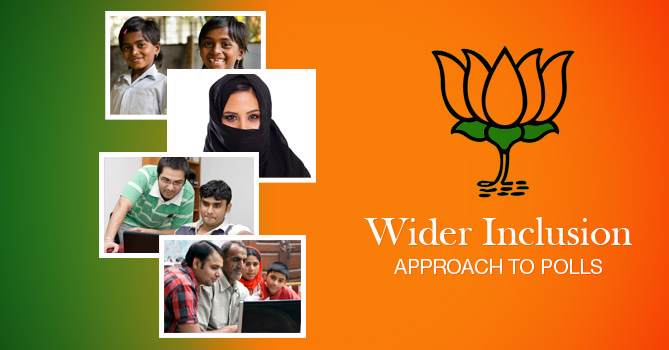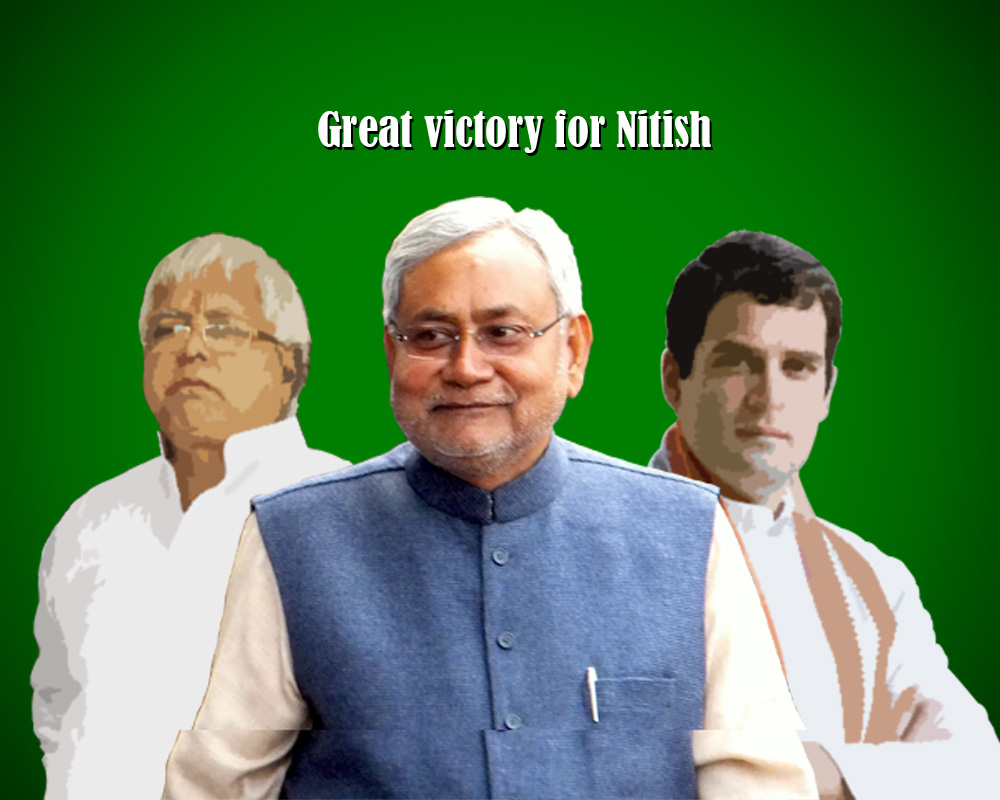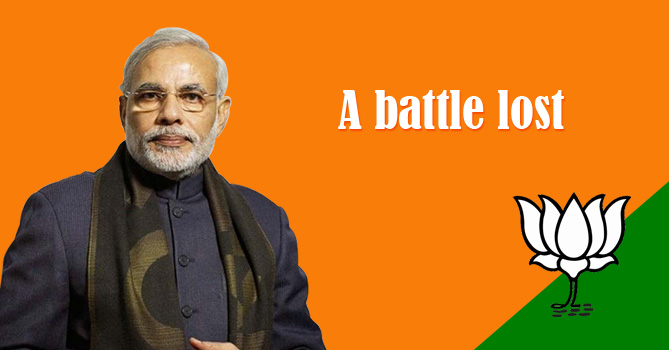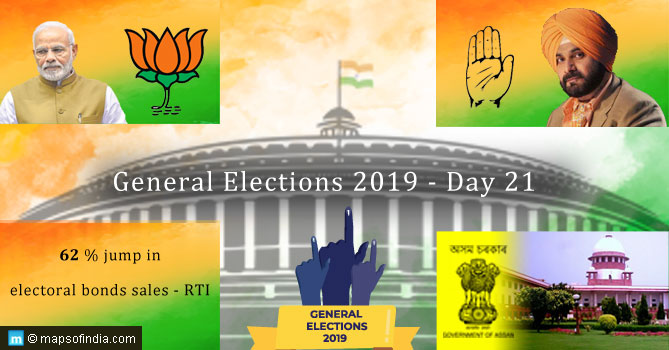In a fresh attempt to reposition itself as a party with wider representation than the traditional ‘upper caste’ positioning, the BJP is using the Bihar polls to reinvent its perception for the first time. This is reflected in Amit Shah’s three-pronged game plan to offer tickets to candidates that represent a wider section of voters. Three target segments are – OBC-EBC, women, and youth.
BJP fully realizes that if it has to take on the JD(U) – RJD combine, it has to break their stranglehold on their traditional vote bastions i.e. the Yadav, Muslim and a part of the Dalit segment. By roping in Ram Vilas Paswan and Jitan Manjhi, it has addressed the OBC and EBC categories. Along with this, they have won over Upendra Kushwaha who brings in the Kushwaha vote. That leaves out the Yadavs, who have been dominating politics in Bihar ever since Lalu Prasad Yadav took front stage. BJP is hoping that this segment will get split, with SP going it alone, and his hoping to win over Mulayam Singh, at a later date.
BJP knows that a large section of the Muslim community will not support the BJP, but it is making efforts to reach out to some sections and hoping that with AIMIM entering the fray, the Muslim vote may get split, with some positive spill over coming in its favour.
Amit Shah is focusing big on women and youth, as these two sections are increasingly showing signs of moving away from traditional caste-based voting to a more independent-of-caste and giving preference to development-related issues, which has been BJP’s strong point, and therefore, these two sections can make a significant difference and tilt the balance away in its favour away from traditional poll equations.
Thanks to Internet, electronic and social media, this is increasingly true for the Muslims, as well, where both women and youth are open to questioning the traditional vote politics and taking a more independent approach.
Based on the above, the ticket distribution pattern of BJP becomes critical. A close look at the list of 43 candidates released thus far reveals representation of 17 different castes. This is indeed a refreshing approach by the BJP to include a broad based representation and will certainly help BJP in building a wider support base in Bihar, and subsequently in other states as well.
The move has full support from the RSS that is also stepping up its effort to rejuvenate the organization through wider inclusion of sections within the Hindu fold that have been ignored so far.
Congress opposes ‘Mann ki Baat’
Congress has opposed PM Modi’s ‘Maan ki Baat’ being aired, while the Model Code of Conduct is in force. Criticizing the broadcast as an indirect way to influence voters, Congress has called for an outright ban of the program until the elections get over. The next broadcast is due this Sunday.
Congress had raised a similar objection against the program broadcast during the Haryana elections, but the EC office had turned it down, stating the content had no impact on the polls. This time too, although the EC office has not received any formal complaint from the Congress so far, it is open to reviewing the content of the program after it has been broadcast before passing any judgment on future programs.
Lalu Prasad and JD(U) to highlight Maharashtra Government’s diktat on Marathi speaking issue for auto drivers
Maharashtra government’s recently announced that new auto licenses will be given only to those drivers who can speak in Marathi. In Mumbai, close to 70% of the auto and taxi drivers are from Bihar and U.P. and most of the existing auto and taxi drivers can’t speak Marathi. The recent order will only make it more difficult for people from U.P. and Bihar to apply. The anti-Bihari and U.P issues in Mumbai strike a strong emotive response back home in both states and therefore, Lalu Prasad Yadav sees an opportunity to rake up the issue as a BJP sponsored one, since it is the ruling party in Maharashtra. To what extent he will succeed needs to be seen.
Politician in focus: Shahnawaz Hussain (Born 12 December 1968)
Shahnawaz Hussain was born in Supaul in a village near Samastipur in Bihar and completed his Diploma in Engineering from Patna and Delhi. He joined ABVP during his student days and has remained with BJP ever since. Rising up from student politics, at the age of 31, he was elected as the Member of Parliament from Kishanganj in October 1999.
He has served various central ministerial portfolios, including MOS for Food Processing and Industries, Youth Affairs and Sports, Human Resources, and MOS-Coal (Independent). He became the youngest Cabinet Minister when he was appointed the Minister of Civil Aviation. He has also served as the Minister of Textiles.
Constituency in focus: Sitamarhi
Sitamarhi is a district headquarter that was carved out of the Muzzafarpur district on 11 December 1972. In 1934, Sitamarhi was completely devastated by a severe earthquake that hit the Indo-Nepal border region and was subsequently rebuilt.
As per Hindu mythology, Sita – wife of Lord Rama was born here and has Janaki temple and Janaki Kund dedicated to her.
2010 Assembly Poll Results
- Winner in 2010 Assembly Poll: Sunil Kumar alias Pintu, BJP
- Margin of win: 5221 votes; 4.40% of total valid votes
- Runner-up: Raghwendra Kumar Singh, LJP
- Male voters: 64,016 ; Female voters: 54,522 ; Total: 118,616
- Polling %: 52.93
- Male Candidates who contested: 7 ; Female Candidates: 1
- Polling stations: 235
Read Related Information:
Bihar Elections 2015
Bihar Election Updates
Bihar Election Dates
Candidate List for Bihar Assembly Elections 2015
List of Assembly Constituencies of Bihar
Bihar Election Results
Political Parties of Bihar
Who will be the next Chief Minister of Bihar?
List of Chief Ministers (CM) of Bihar
Government and Politics of Bihar
List of Governors of Bihar
Bihar Map






